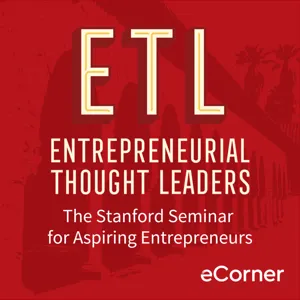Podcast Summary
The Rapid Advancement of Autonomous Vehicles: Technological advancements have transformed the capabilities of autonomous vehicles, leading to fully autonomous taxis like Waymo. The self-driving car industry has made significant progress since its early development in 2009.
Autonomous vehicles have come a long way in terms of technology and capabilities. The Waymo Taxi, for example, operates fully autonomously, with no human driver present. The development of autonomous vehicles started as early as 2009, with engineers like Dmitri Dolgov working on the project. Back then, the technology was still crude compared to what we have today. Over the years, advancements in sensing technology, computers, software, and artificial intelligence have revolutionized the capabilities of autonomous vehicles. Although the components of the system remain the same, they now work together in a significantly different and more sophisticated way. This shows the rapid progress made in the self-driving car industry due to technological advancements.
Achieving the Impossible: The Early Days of Google's Self-Driving Car Project: Against all odds, a dedicated team at Google accomplished ambitious milestones in self-driving car technology, proving that a clear goal, innovative thinking, and teamwork can achieve remarkable progress.
The early days of the self-driving car project at Google were filled with a small community of innovators who worked tirelessly to achieve seemingly impossible goals. Dmitri Dolgov and his team were given two years to drive a hundred thousand miles in autonomous mode and complete ten carefully selected routes of a hundred miles each, all without human intervention. Despite skepticism from experts in the field, they were able to accomplish these milestones with three months to spare. While they celebrated their achievements, they kept the project a secret, adding to the excitement and thrill of the endeavor. This phase of the project represented the essence of a startup, where an impossible goal was clearly defined, bringing together a dedicated team to push boundaries and achieve remarkable progress.
The Challenges of Developing Self-Driving Cars: Developing self-driving cars is a complex and iterative process that involves tackling various obstacles, from fundamental challenges to occasional comical setbacks.
Developing self-driving cars requires relentless focus and constant iteration. The team at Dmitri Dolgov's company worked tirelessly, prototyping and learning every day and every hour. They made amazing progress but also faced numerous challenges along the way. One difficult problem they encountered was during a test drive that involved driving on all the freeways and crossing the bridges in the Bay area. Everything was going well until they reached the end of their route, where the specific toll booth they needed to pass through was closed. This setback reminded them that they couldn't anticipate every eventuality, and they had to go back to square one. Developing self-driving cars is a complex process that requires tackling various obstacles, both fundamentally challenging and occasionally even comical setbacks.
Overcoming Challenges to Develop Autonomous Vehicles: Testing in real city environments with obstacles and feedback from users led to the shift from driver assist to fully autonomous vehicles.
The early days of autonomous vehicle development were filled with challenges and learning experiences. The team at Waymo faced obstacles such as narrow streets, confusing lane markings, and unpredictable pedestrians. They realized that in order to truly develop complex autonomous systems, testing in cities with stoplights and intersections was necessary. This realization led to a shift in focus from creating driver assist technologies to building fully autonomous vehicles. The decision was driven by feedback from users of the driver assist system, who tended to overtrust the technology and engage in distracting activities while driving. Additionally, progress was made in tackling the most difficult aspects of driving on surface streets.
Waymo: Building Technology for Autonomous Vehicles: Waymo's focus is on developing the Waymo driver to power any car, emphasizing their commitment to global transportation improvement through autonomy over traditional car manufacturing.
Waymo's main focus is on building the technology for fully autonomous vehicles, rather than becoming a car company. They recognized that building cars is a challenging task that requires expertise accumulated over many years. Instead, Waymo's goal is to develop and deploy the Waymo driver, which can power any car to become autonomous. They have gone through three generations of their driver technology, starting with a low-speed vehicle called the Firefly. Their aim is to make the technology foolproof and perfect for complex driving environments like San Francisco. This shift in focus highlights Waymo's commitment to improving transportation globally through autonomy rather than traditional car manufacturing.
Waymo's Innovative Approach to Making Autonomous Vehicles Safe: Waymo designed and manufactured their own safety systems, including lidar and custom sensors, to ensure reliability and capability, making them a leader in self-driving car technology.
Waymo's early phase of developing autonomous vehicles forced them to consider what it means for a vehicle to be ready. They realized they needed a car with safety systems that didn't yet exist, so they designed and manufactured their own. They put a lot of thought and work into making the vehicle safe, including features like a foam front, a plexiglass window, and detachable sensor codes. They also developed their own lidar and custom sensor suite, as existing sensors didn't meet their reliability and capability requirements. Waymo's technology utilizes a combination of cameras, lidar, and radar, which provide different and complementary physical properties. This approach allows for high resolution, color richness, and redundancy, making it a better option compared to relying exclusively on cameras like some other self-driving car manufacturers.
Waymo's sensor fusion technology and advanced AI models enable safe and autonomous navigation in challenging environments.: Waymo's comprehensive sensor suite and advanced technology allow them to develop fully autonomous vehicles, improving safety and expanding their ride-hailing service.
Waymo's autonomous vehicles utilize a combination of passive and active sensors to effectively navigate the environment. While cameras serve as passive sensors, relying on external light sources, active sensors like radars and lidars emit their own energy to detect and perceive the surroundings. These active sensors offer advantages such as better visibility in conditions like fog or rain. Waymo's AI and ML models capitalize on the fusion of data from all these sensors to optimize perception and drive safely. This comprehensive sensor suite and advanced technology enable Waymo to develop fully autonomous vehicles capable of operating in dense urban areas. By constantly improving hardware and software, Waymo aims to take significant leaps towards achieving full autonomy and expanding their Waymo One ride-hailing service.
Overcoming Anxiety: The Comfort of Autonomous Vehicles: People quickly become at ease when using autonomous vehicles, as the anxiety of machine-driven transportation is outweighed by the anxiety of human drivers. This reassures us that autonomous vehicles may provide a safe and efficient mode of transportation in the future.
Despite initial fears and concerns, many people quickly become comfortable and at ease when using autonomous vehicles like Waymo. The Co-CEO of Waymo, Dmitri Dolgov, explains that the anxiety surrounding machine-driven transportation is often outweighed by the anxiety of human drivers. He mentions that once people experience riding in an autonomous vehicle, they typically become comfortable within minutes and go back to their normal activities, such as using their phones or working. This shift in comfort suggests that the brain switches to "passenger mode" and passengers can enjoy the benefits of privacy and productivity while being transported. This reassures us that autonomous vehicles may truly provide a safe and efficient mode of transportation in the future, despite initial skepticism.
The Promise of Autonomous Vehicles: Enhancing Safety on the Roads: Autonomous vehicles have the potential to significantly reduce road fatalities and injuries, as demonstrated by Waymo's evidence of safer driving and the reduction in bodily injury and property damage claims.
The introduction of autonomous vehicles brings both skepticism and excitement. However, it is crucial to recognize the flaws in our current transportation system, which claims the lives of over 40,000 people each year in the US alone. The potential for safer roads is a major advantage of autonomous technology. With over 5 million fully autonomous miles driven, Waymo has provided evidence of the safety benefits of their autonomous cars. Liability is an ethical and legal issue that needs to be addressed, but Waymo takes responsibility for faults in their technology. Furthermore, studies show significant reductions in bodily injury and property damage claims, highlighting promising safety improvements.
Expanding Waymo's Technology Beyond Ride-Hailing: Waymo aims to deploy its autonomous driving technology in various industries, starting with ride-hailing. Despite not being profitable yet, Waymo sees ride-hailing as their main focus and envisions future expansion into other sectors like trucking and deliveries.
Waymo sees itself as a generalizable Waymo driver, with the goal of deploying its technology in different product lines and commercial applications. Currently, their main focus is on ride-hailing with Waymo One, but they are also exploring partnerships like their recent collaboration with Uber. Ride-hailing is considered a massive opportunity with tremendous growth potential, and Waymo believes that full autonomous vehicles can bring even more benefits and positive economics to the table. While ride-hailing may not be a money-making operation for Waymo at the moment, they see it as their primary business line and are confident in its potential. They also have plans to expand into trucking, deliveries, and personally owned vehicles in the future.
The Future of Transportation: Autonomous Vehicles and Their Impact on Urban Centers.: Autonomous taxis will revolutionize urban transportation, offering improved safety and efficiency, while freeing up parking space for more productive uses.
The future of transportation is headed towards autonomous vehicles. While it may be unrealistic for ordinary people to own fully autonomous cars in the next 10 years, autonomous taxis will likely be available for use in major urban centers. This shift towards autonomy is driven by the potential for improved safety and efficiency. Autonomous vehicles can be better drivers than humans, offering a smoother and more secure experience. As more cars become autonomous, they can coordinate and optimize their movements, increasing the overall efficiency of transportation systems. Additionally, the rise of autonomous vehicles may free up space in cities currently occupied by parked cars, allowing for more productive and engaging uses.




